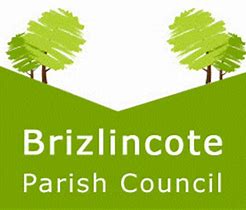The Parish of Brizlincote came about following the parishing of Burton upon Trent on the 1st April 2003. The land now within the Parish was formerly in Stapenhill and Winshill.
The lower part of the Parish includes the playing fields and The Hollow which run alongside the River Trent, Stapenhill Cemetery and Scalpcliff Hill. Elms Road, Stapenhill Road, Clay Street and Malvern Street residents may be surprised that they are all within the Brizlincote Parish, with the boundary running along Spring Terrace Road. The Stapenhill Post Office is also within the Parish boundary.
The development of the valley over the years has seen Holme Farm, Spring Cottage Farm and Tollgate Farm converted into housing estates, along with land belonging to the Model Dairy Farm.The housing estate behind the Co-op store (formerly Joe Bloggs) was developed on land once farmed as Holme Farm. The housing estate off Malvern Street was once Spring Cottage Farm, and the upper valley housing estate (Tesco island to the Esso petrol station) a development of Tollgate Farm. The land developed between Tesco island and Woods lane was part of the Model Dairy Farm.
Brizlincote Valley
Brizlincote Valley, belying its initial impression of an extensive 21st century housing estate, is in fact steeped in history, having been linked through centuries to nearby Bretby Castle and prominent events in English history. With a succession of illustrious owners, a member of the Stanhope family built the landmark Brizlincote Hall, perched high on the ridge, in the 18th century to replace the original crenellated Brizlincote Manor House. Boasting sound links with the Tudor and Stuart dynasties and with conflicts such as Waterloo, Trafalgar and the Civil Wars, Brizlincote has seen much action of note over successive centuries. Brizlincote Hall owners, the Pagets, and later, the Merry family, obstinately, and sometimes dangerously, defied both religious reformation and Oliver Cromwell’s rule. In fact, the Roundheads sequestered the hall with a garrison of soldiers ousting owner, John Merry. Later, generations of Stanhopes were influential amongst royalty and government. A more recent owner, a descendent of the Stanhopes, was Egyptologist Lord Carnarvon. Many other characters, worthy of further acquaintance, such as the Barnes, the coal mining Nadins, the Higgots and Lomas’s were also owners or tenants of the Hall and Brizlincote farms.
It should therefore be of no surprise that Burtonians were horrified, vociferously protesting, when, towards the end of the 20th century, plans were proposed to transform this lovely, rural and agriculturally productive valley into the conurbation, which dominates today, even though its harsh modern contours have been softened by its links with the new millennium National Forest. (The Valley had even affectionately been known as ‘Little Switzerland’, such was its charm). Burtonians have many fond memories of hill walking, sledging, cross country runs, picnics, fishing, kite flying and model planes in the fields and valleys, near the brook, by the ponds and along the ancient lanes of Brizlincote. Treasured by the oldest residents are early memories of ‘Treat Days’ when, in complete contrast to the smoky industrial atmosphere of Burton-upon-Trent’s heyday, children were transported for their once a year ‘treat’ into the clean fresh air of Brizlincote Valley, welcomed by the tenants, such as local character, John Startin. There are still interesting relics of this past era, the Hall itself, stone pillars, huge iron gates, Brook Cottage, the Old Granary on the Model Dairy Farm, Rowley Cottage standing alone in its antiquity amongst red roofed modern structures. Whilst the other landmark in Brizlincote, the Victorian Water Tower, belongs to neighbouring Winshill, nevertheless its lofty structure offers more tantalising clues to an era long gone in Brizlincote Valley.
With much encouragement and information provided by local stalwarts keen to preserve knowledge of the fascinating history of Brizlincote for future generations, Brizlincote resident, Valerie Williams has researched the area, producing a book, “Brizlincote : Historical Trails, Contemporary Tales” available at The Magic Attic, Sharpe’s Pottery Museum, Swadlincote.
